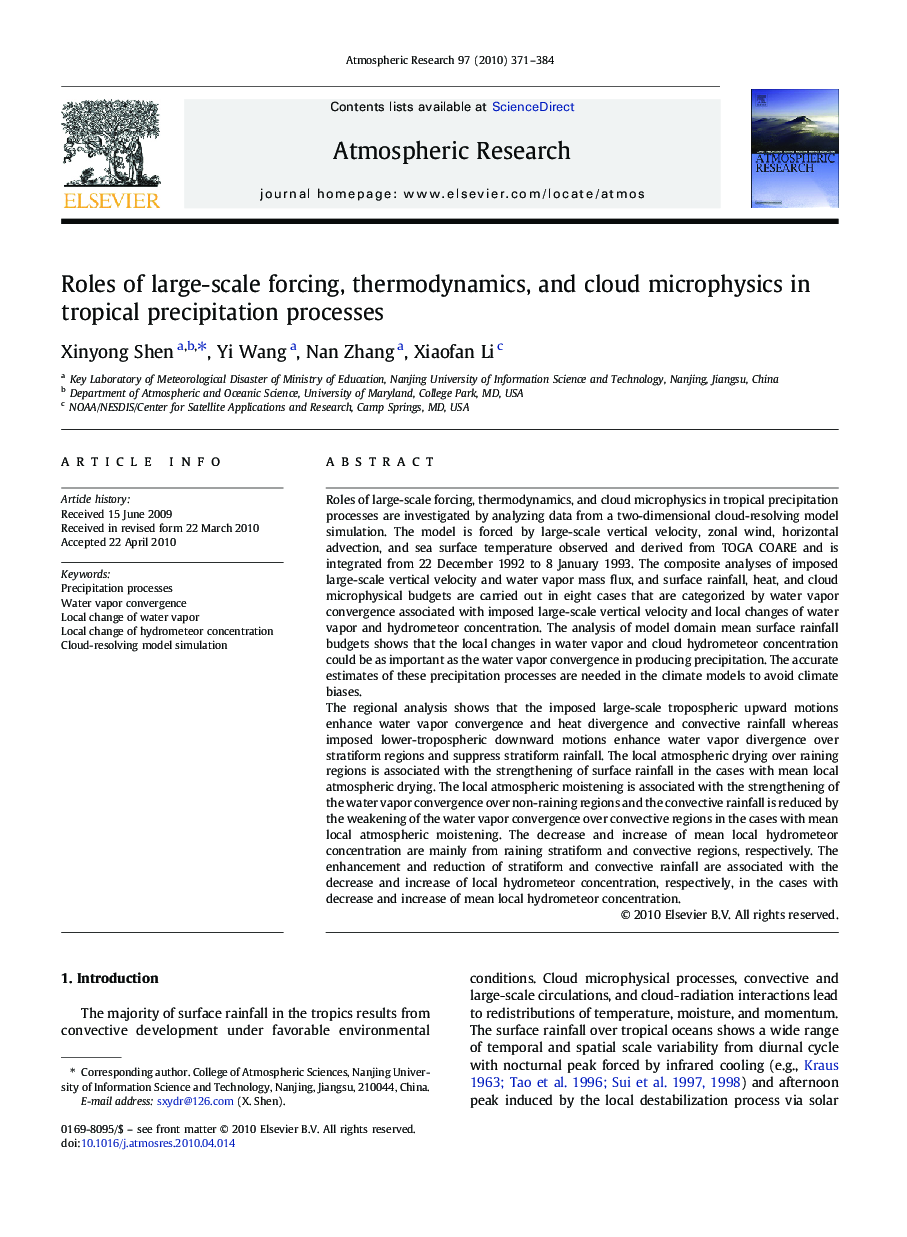| Article ID | Journal | Published Year | Pages | File Type |
|---|---|---|---|---|
| 4450795 | Atmospheric Research | 2010 | 14 Pages |
Roles of large-scale forcing, thermodynamics, and cloud microphysics in tropical precipitation processes are investigated by analyzing data from a two-dimensional cloud-resolving model simulation. The model is forced by large-scale vertical velocity, zonal wind, horizontal advection, and sea surface temperature observed and derived from TOGA COARE and is integrated from 22 December 1992 to 8 January 1993. The composite analyses of imposed large-scale vertical velocity and water vapor mass flux, and surface rainfall, heat, and cloud microphysical budgets are carried out in eight cases that are categorized by water vapor convergence associated with imposed large-scale vertical velocity and local changes of water vapor and hydrometeor concentration. The analysis of model domain mean surface rainfall budgets shows that the local changes in water vapor and cloud hydrometeor concentration could be as important as the water vapor convergence in producing precipitation. The accurate estimates of these precipitation processes are needed in the climate models to avoid climate biases.The regional analysis shows that the imposed large-scale tropospheric upward motions enhance water vapor convergence and heat divergence and convective rainfall whereas imposed lower-tropospheric downward motions enhance water vapor divergence over stratiform regions and suppress stratiform rainfall. The local atmospheric drying over raining regions is associated with the strengthening of surface rainfall in the cases with mean local atmospheric drying. The local atmospheric moistening is associated with the strengthening of the water vapor convergence over non-raining regions and the convective rainfall is reduced by the weakening of the water vapor convergence over convective regions in the cases with mean local atmospheric moistening. The decrease and increase of mean local hydrometeor concentration are mainly from raining stratiform and convective regions, respectively. The enhancement and reduction of stratiform and convective rainfall are associated with the decrease and increase of local hydrometeor concentration, respectively, in the cases with decrease and increase of mean local hydrometeor concentration.
